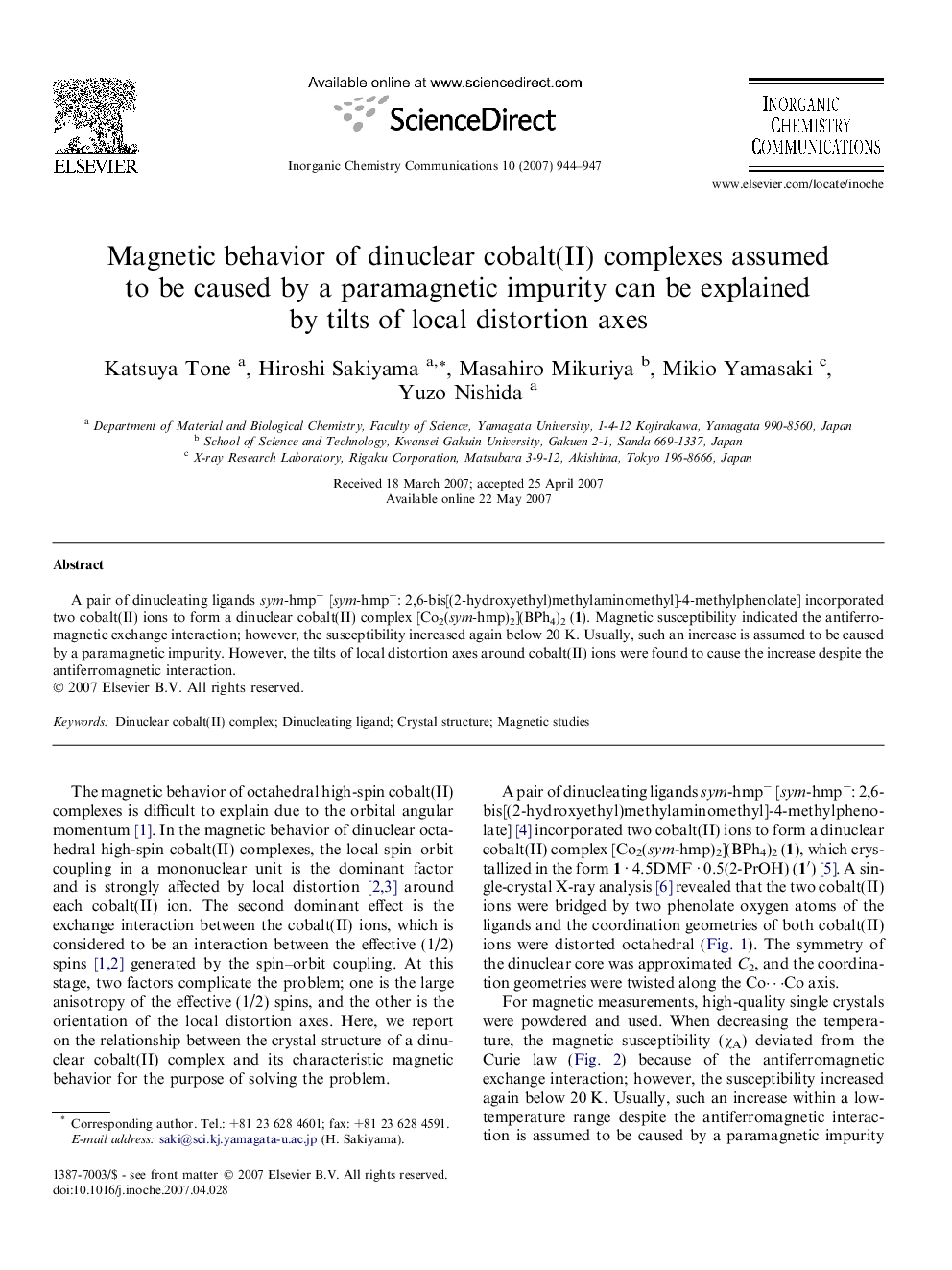| Article ID | Journal | Published Year | Pages | File Type |
|---|---|---|---|---|
| 1302514 | Inorganic Chemistry Communications | 2007 | 4 Pages |
A pair of dinucleating ligands sym-hmp− [sym-hmp−: 2,6-bis[(2-hydroxyethyl)methylaminomethyl]-4-methylphenolate] incorporated two cobalt(II) ions to form a dinuclear cobalt(II) complex [Co2(sym-hmp)2](BPh4)2 (1). Magnetic susceptibility indicated the antiferromagnetic exchange interaction; however, the susceptibility increased again below 20 K. Usually, such an increase is assumed to be caused by a paramagnetic impurity. However, the tilts of local distortion axes around cobalt(II) ions were found to cause the increase despite the antiferromagnetic interaction.
Graphical abstractDespite the antiferromagnetic interaction, the tilts of local distortion axes around cobalt(II) ions caused an increase in magnetic susceptibility below 20 K, which had been assumed to be caused by a paramagnetic impurity.Figure optionsDownload full-size imageDownload as PowerPoint slide
